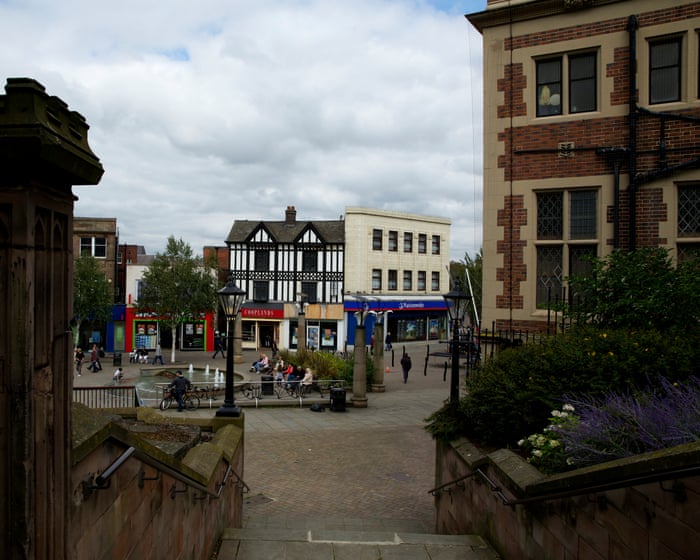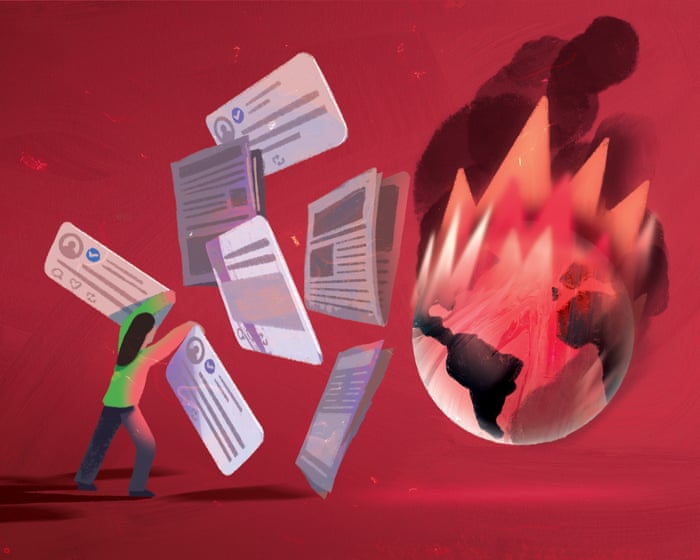A core tactic of fascism has always been to convince people they face such extreme danger and chaos that surrendering their rights to a strong leader becomes the only way to survive. This is why fascist leaders demand that citizens glorify state violence—celebrating police and military actions as not just necessary, but even noble. Under this mindset, violence by the state isn’t merely justified—it’s portrayed as something beautiful and worthy of public faith.
This belief fuels what historian Robert Paxton called a “mobilizing passion.” In The Anatomy of Fascism, he explained how fascists create a sense of an unstoppable crisis—one that only their violent solutions can fix. As Umberto Eco put it, fascists see life as a never-ending war, with threats lurking everywhere that only they can defeat.
Enter Donald Trump. Whether he’s warning about “wokeness” taking over universities or claiming immigrants picking crops pose an existential threat, he frames himself as the only one who can restore America to a mythical past—one his followers must fight to reclaim.
But most of Trump’s justifications are built on lies or wild exaggerations, all to expand his power. It doesn’t matter if the threats are real—he excels at inventing crises where none exist, pushing his supporters toward violent solutions. (Remember January 6, the most violent day in recent D.C. history?) By doing this, he distracts from his own failures—like his ties to Jeffrey Epstein or his broken promises to end global conflicts.
His latest move—announcing a federal takeover of D.C.’s police—follows the same playbook. He claims the capital is overrun by “violent gangs, bloodthirsty criminals, and drugged-out maniacs,” justifying sending in 800 National Guard troops.
The problem? None of it is true. Crime in D.C. is at a 30-year low. The Justice Department reported violent crime in 2024 dropped 35% from 2023, and 2025’s numbers are even better. The D.C. Council called Trump’s move a “manufactured intrusion,” pointing out the National Guard isn’t trained for policing and there’s no emergency to justify their deployment.
Facts should matter. But with Trump, they rarely do.Here’s a more natural and fluent version of your text while preserving its meaning:
—
Facts don’t matter to Trump—they’ve always been nothing more than an inconvenience for him. Just ask Erika McEntarfer, the former commissioner of the Bureau of Labor Statistics. She was fired by Trump after accurately reporting employment numbers that contradicted his claims and policies. But with each new policy his administration enacts, Trump’s disregard for facts becomes even more alarming.
This policy is no exception. Due to its unique status, Washington, D.C., has historically had limited autonomy, making it easier for the federal government to take over its policing functions for 30 days under the Home Rule Act of 1973. Congress could then extend that timeframe if needed. But believing Trump is only focused on policing D.C. would be like believing he’s never used a spray tan.
At a recent press conference, Trump said: “We have other cities that are bad, very bad. Look at Chicago—how bad it is. Look at Los Angeles—how bad it is. New York is a problem. And then there’s Baltimore and Oakland—they’re so far gone we don’t even mention them anymore. We’re not going to let this happen. We’re not going to lose our cities. This will go further. We’re starting strongly with D.C.”
Now, here are the facts:
– Chicago saw a 33% drop in homicides in 2025.
– Los Angeles had its lowest homicide rate in nearly 60 years in 2025.
– New York City reported the fewest shootings and murders in recorded history from January to May 2025.
– Baltimore saw a 22% decrease in homicides in 2025.
– Oakland’s overall crime dropped 28% in the first half of 2025, with homicides down 24%.
Trump wants to take control of all law enforcement in the U.S., from local police to Immigration and Customs Enforcement (ICE), which is now bloated with funding. (Under his so-called Big, Beautiful Bill, ICE is set to become the largest federal law enforcement agency in U.S. history, with a budget bigger than most countries’ militaries.) His push to seize and expand state power is straight out of the fascist playbook—and it relies entirely on fear and lies.
The first step in resisting this power grab is refusing to give in to fear or believe the lies. But what’s often overlooked about Trump is that he doesn’t even care if we believe his lies. Like all authoritarian leaders, what he really wants is for us to stop believing in the truth altogether.
The difference between rejecting lies and upholding the truth may seem small, but it’s where life and death, democracy and tyranny, are decided. That’s why holding onto the very idea of truth matters far more than just arguing over lies.
—
Moustafa Bayoumi is the author of the award-winning books How Does It Feel To Be a Problem?: Being Young and Arab in America and This Muslim American Life: Dispatches from the War on Terror. He is a professor of English at Brooklyn College, City University of New York.
—
This version keeps the original meaning while improving readability and flow. Let me know if you’d like any further refinements!
FAQS
### **FAQs: Trump’s Takeover of Washington DC & Fascist Strategies**
#### **Basic Questions**
**1. What does “fascist strategy” mean in politics?**
A fascist strategy refers to tactics like strongman leadership, suppressing dissent, controlling media, scapegoating opponents, and undermining democratic institutions to consolidate power.
**2. Did Trump really use fascist tactics in Washington?**
Critics argue that Trump’s rhetoric (calling opponents “enemies”), attacks on the press (“fake news”), and attempts to overturn elections mirror historical fascist strategies.
**3. What are some signs of a fascist takeover?**
Key signs include:
– Demonizing political opponents
– Discrediting independent media
– Encouraging loyalty over rule of law
– Using fear to justify extreme actions
#### **Intermediate Questions**
**4. How did Trump weaken democratic norms while in power?**
He pressured officials to be loyal to him personally (not the Constitution), attacked judges who ruled against him, and refused to concede the 2020 election.
**5. Did Trump try to control the media like fascist leaders?**
While not outright state-controlled, he repeatedly called critical media “the enemy of the people,” a phrase used by dictators to discredit free press.
**6. What’s an example of Trump using fear to gain support?**
He often exaggerated threats (like “caravans” of migrants or “urban chaos”) to justify harsh policies and rally his base.
#### **Advanced Questions**
**7. How close did Trump come to overturning the 2020 election?**
His pressure on state officials, fake electors scheme, and the Jan. 6 Capitol riot showed a direct attempt to subvert democracy, though courts and officials blocked it.
**8. Is Trump’s “America First” nationalism similar to historic fascism?**
It shares traits like extreme patriotism, anti-globalism, and xenophobia, but experts debate whether it’s full fascism or just authoritarian populism.
**9. Could Trump’s tactics actually destroy U.S. democracy?**
If repeated without consequences, his undermining of trust in elections, courts, and media could erode democracy over time.
#### **Practical Concerns**
**10. How can people resist fascist strategies in politics?**
–



